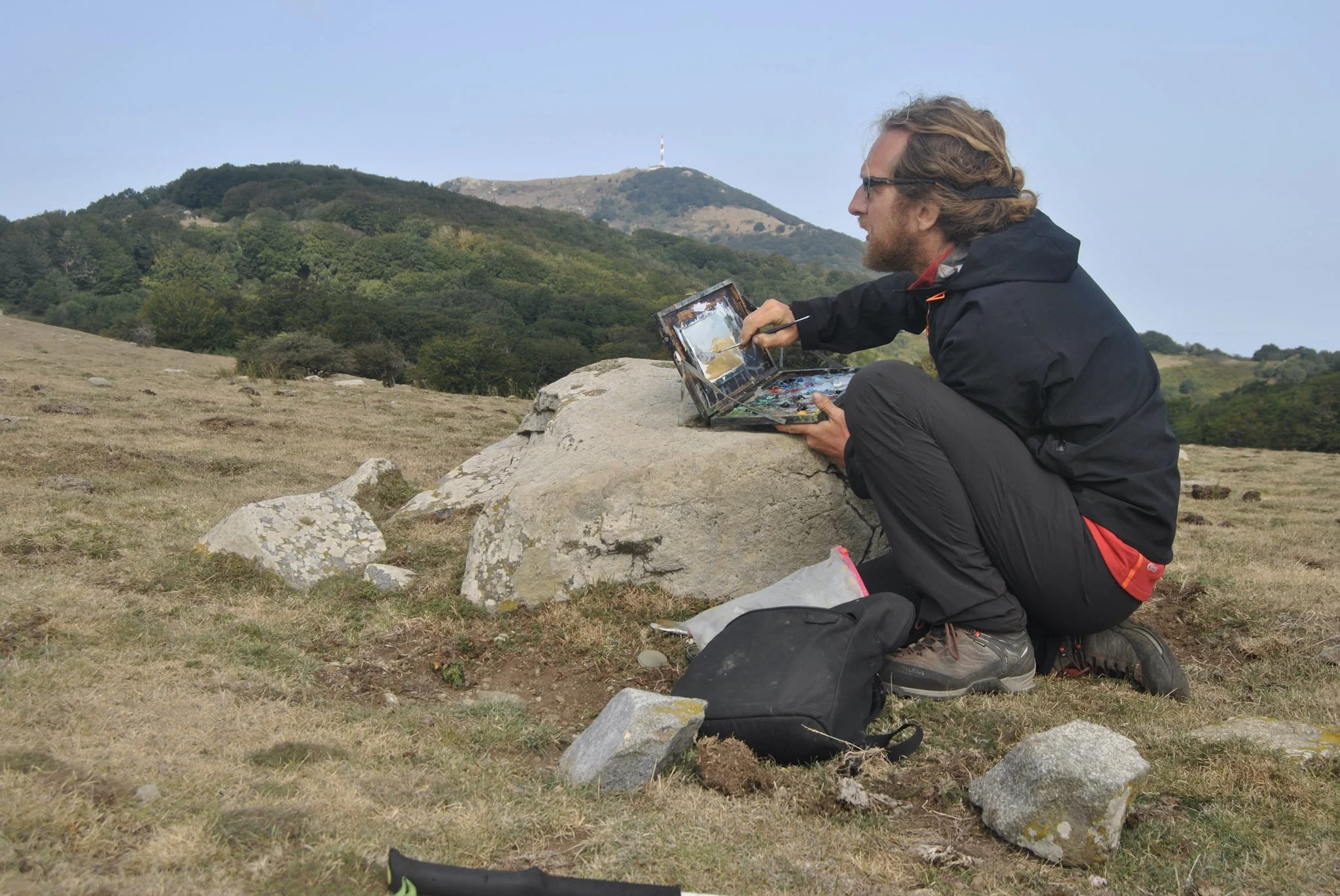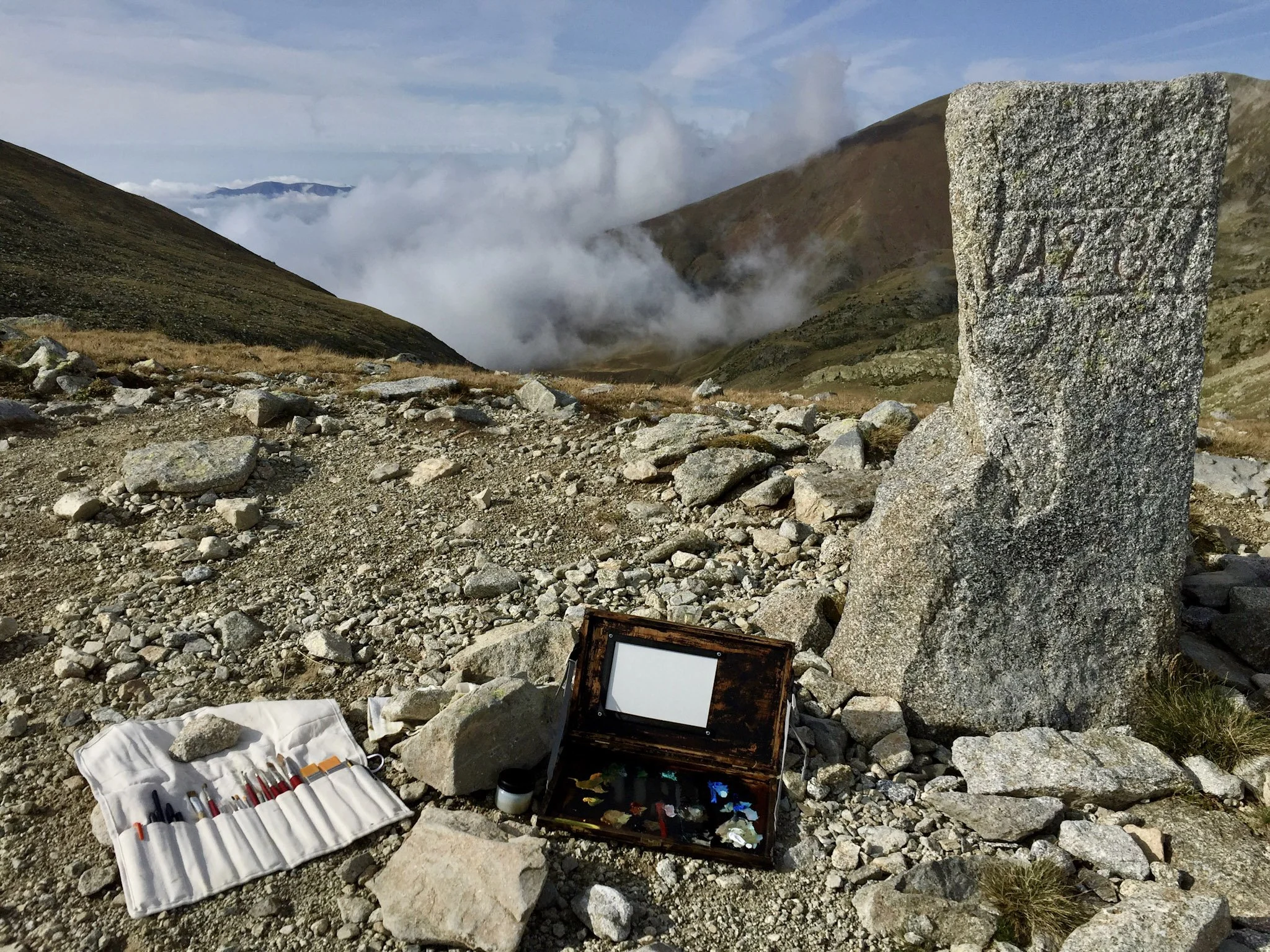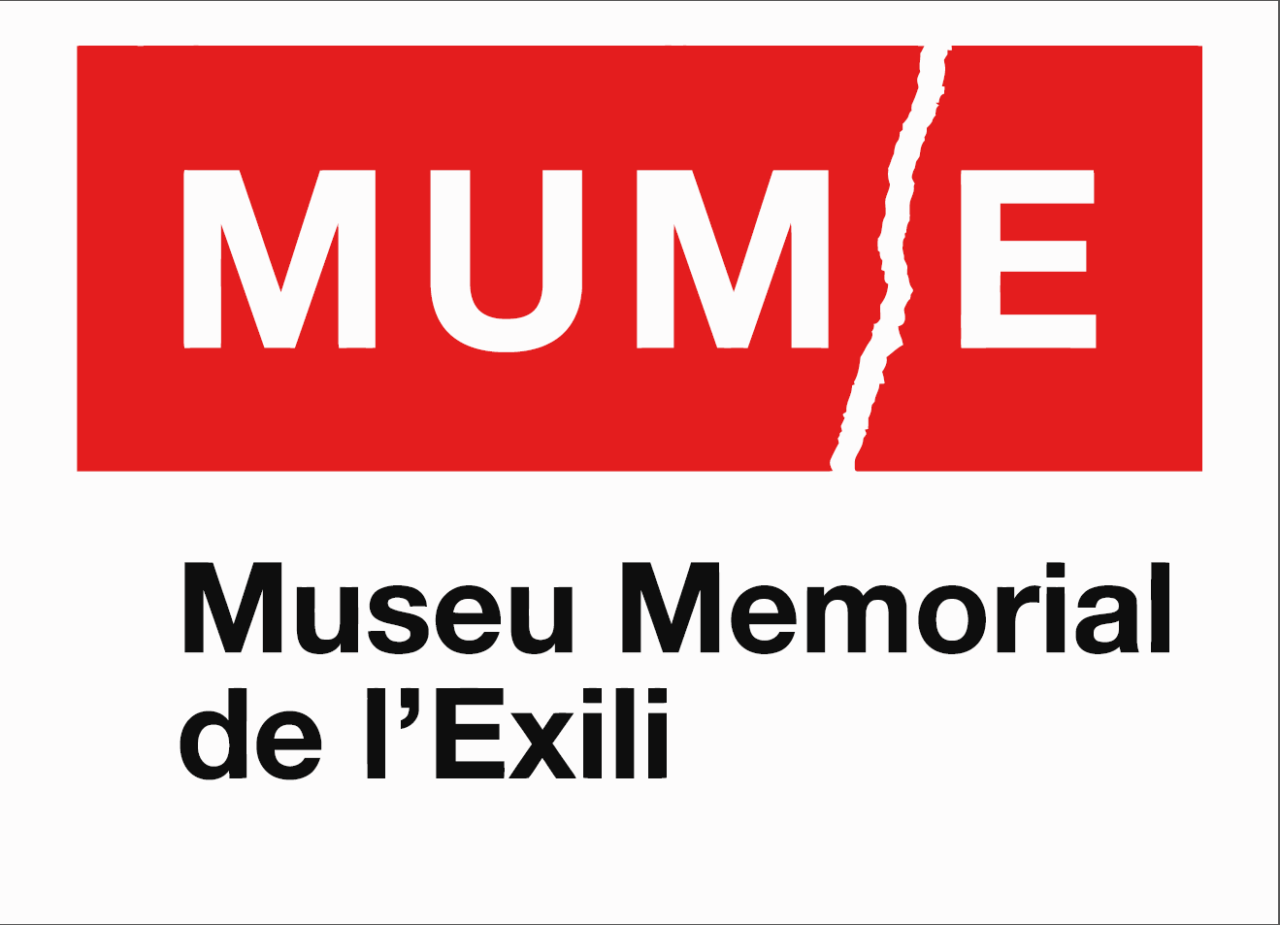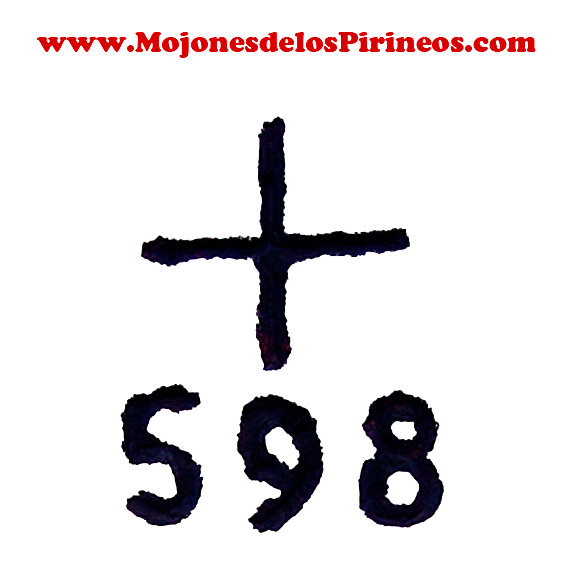En frontera
Caminando y pintando en la frontera: 300 km, 25 días, 198 mugas 212 obras
2017/2022 · Barcelona Producció 2017 / La Capella
En el verano del 2017 Noris recurrió caminando los 300 km de la frontera hispano-francesa de la provincia de Girona por la cual pasaron los principales caminos del exilio republicano.
Durante el recorrido, el artista pintó una obra en correspondencia de cada uno de los 198 mojones que marcan el confín.
Caminar y pintar uniendo puntos a lo largo de la frontera, como en equilibrio en esa linea invisible que divide en dos lo que es uno, haciendo visible lo invisible y desplegando así un nuevo escenario de la memoria.
La ruta se completó entre el 18 de agosto y el 11 de septiembre de 2017: 300 km, 25 días, 198 mugas, 212 obras
En los últimos años, el trabajo pictórico de Marco Noris ha girado en torno al exilio y al desarraigo, utilizando el paisaje como escenario y como frontera, aunque siempre desde la distancia y la comodidad del taller. Fue la necesidad de una experiencia directa la que lo impulsó a emprender el proyecto En frontera, una acción en la que el objetivo del viaje no era la pintura, sino la propia experiencia: la vivencia de hacer y ser frontera, la introspección que nace del largo caminar por la naturaleza, del viaje y de sus dificultades.
El proyecto se llevó a cabo durante el verano de 2017, a lo largo de los 290 kilómetros de frontera franco-española en la provincia de Girona, por donde transitaron las principales rutas del exilio republicano español. Durante el recorrido, el artista realizó un dibujo o una pintura al óleo por cada una de las 198 mugas que marcan el límite fronterizo. La travesía duró 25 días, en los cuales caminó por la línea pirenaica desde los 2.900 metros de altitud hasta el nivel del mar. El resultado final fue un conjunto de 212 obras en formato postal (12×17 cm): 82 pinturas al óleo, 9 técnicas mixtas y 121 dibujos.
En frontera no constituye una documentación visual de las mugas, sino una grabación emocional del entorno, influida por las condiciones geográficas y ambientales del momento. La profunda conexión con el entorno y con el presente que permite la pintura pleinairista fue un elemento esencial para que el proyecto adquiriera un fuerte valor experiencial. En este sentido, las piezas no fueron el fin del viaje: la experiencia misma fue el objetivo, la experiencia de habitar y encarnar la frontera, de recorrer un camino introspectivo en medio de la naturaleza.
Pintar cada obra como si fuera un marcador y caminar uniendo puntos a lo largo de la frontera, en equilibrio sobre esa línea invisible que divide en dos lo que es uno, significó hacer visible lo invisible, desplegando así un nuevo escenario de la memoria.
Muga (“piedra fronteriza”) es una palabra de origen vasco utilizada en los Pirineos catalanes en lugar de mojón (o hito, en castellano) y fita (en catalán). Aunque procede del euskera, el término está también recogido por la Real Academia Española y se usa en castellano con el mismo significado de “límite o frontera entre territorios”.
Aquí se incluye un artículo escrito en catalán por Josep Estruch para On the Border sobre la etimología de la palabra.
Foto: Miquel Serrano Jiménez
Página de investigación que reúne materiales sobre el proyecto En frontera: textos, mapas, registro de caminata y documentación visual. Disponible en catalán, español, inglés e italiano.
En frontera. Vista de instalación de las 198 piezas correspondientes a los 198 hitos oficiales. Fotos: Pep Herrero
El Born CCM, 2022, técnica mixta sobre papel, 149 × 332 cm.
Credits
Proyecto y producción: Marco Noris
Planificación: Amaranta Amati y Marco Noris
Apoyo logístico y guía de montaña: Amaranta Amati
Tutoría: Alexandra Laudo
Impresión 3D: Patricio Rivera
Caminantes: Paula Bruna, Natalia Carminati, Núria Casas, Joana Cervià, Albert Coma, Claudia Godoy, Alexandra Laudo, Jordi Martinez‑Vilalta, Josep Rubio, Miquel Serrano, William Truini
Soporte y transporte: Kike Bela, Joana Cervià, Josep Rubio, Marc Ferrer‑Dalmau y Alex Nogueras, Roberto Noris y Ana Lorente
Agradecimientos especiales a Amaranta Amati, Alexandra Laudo y a todo el jurado de Barcelona Producció; a Roberto y Ana, Joana Cervià y Josep Rubio, Kike Bela, Patricio Rivera, Alex Nogueras y Marc Ferrer‑Dalmau, Cayetano Martínez, Miquel Serrano and Jordi Font del MUME.
Gracias también a Josep Estruch y Montserrat Rectoret Blanch, Rebeca Arquero, Clara Garí y El grand tour, Marc Badia, Xavier Aguilò, Jordi Martinez-Vilalta, Claudia Godoy, Natalia Carminati, William Truini, Nuria Casas, Paula Bruna, Albert Coma, Ferrán Latorre, Carmen Sánchez, Pere Llobera, Zuriñe Etxebarria, Jordi Pi and the Club Excursionista de Gràcia, La Capella, Hangar.org, Piramidón.
Proyecto producido con el apoyo de BCN Producció 17. La Capella, Instituto de Cultura de Barcelona.
En colaboración con




